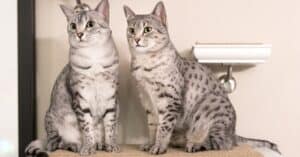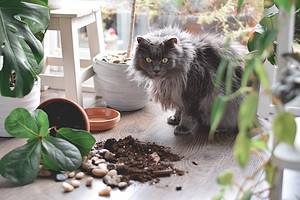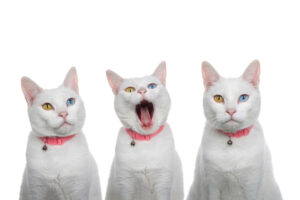Both the Burmese and the Bombay cat breeds are known for their loving nature. These feline friends are affectionate, vocal, and incredibly outgoing. In addition to their unique personalities, both the Burmese and the Bombay cat have short and glossy coats that are sure to captivate you. So, how do you choose which cat breed is best for your family?
In this article we will discuss the key differences between the Burmese and Bombay cat, ranging from differences in appearance to their overall health and lifespan. Let’s dive in!
Burmese vs. Bombay Cat: Key Differences Explained
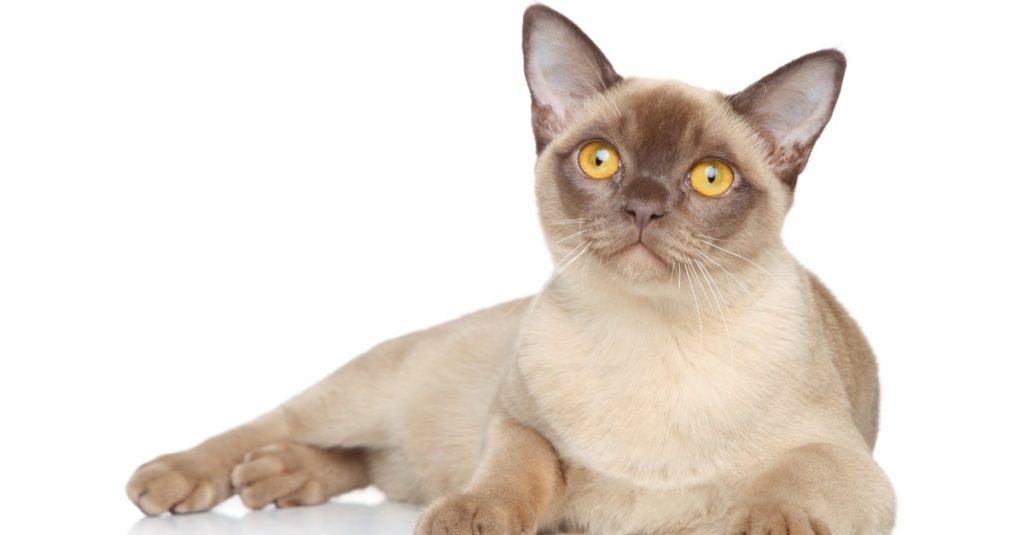
Both the Burmese and the Bombay cat breeds are known for their loving and affectionate nature.
©Jagodka/Shutterstock.com
Let’s discuss the differences between the Burmese and the Bombay cat in detail below!
Burmese vs. Bombay Cat: Length & Weight
The Bombay cat typically weighs more than the Burmese cat, but they are often similar in length.
Burmese: The average Burmese is anywhere from 13 to 20 inches in length. Most male Burmese cats will weigh about 8 to 12 pounds, where females will weigh 6 to 10 pounds on average.
Bombay: The average Bombay cat is around 12 to 20 inches in length. Most male Bombay cats will weigh anywhere from 10 to 15 pounds, while females will weigh 8 to 12 pounds on average.
Burmese vs. Bombay Cat: Coat
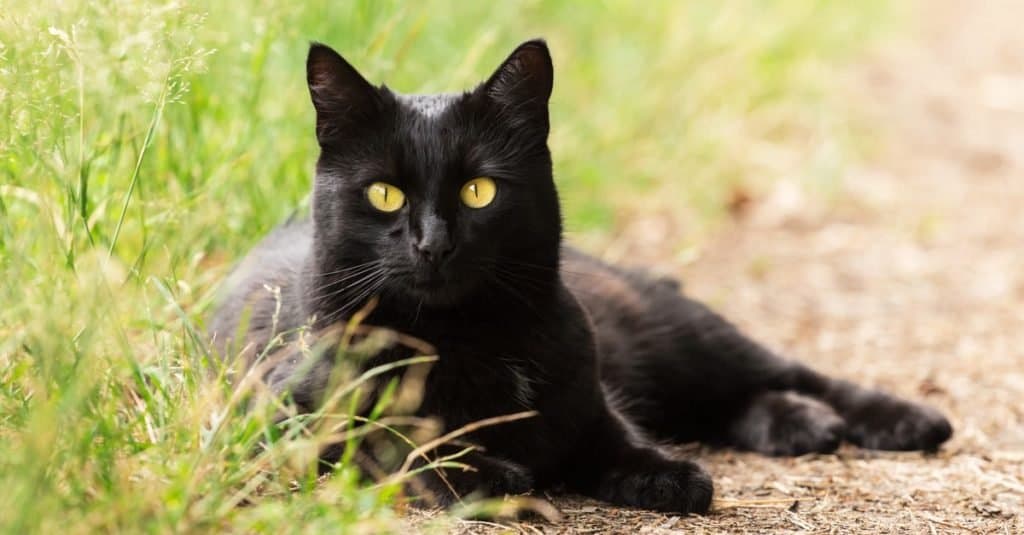
All Bombay cats are black, but not all black cats are a Bombay!
©Viktor Sergeevich/Shutterstock.com
Both the Burmese and the Bombay have a short and glossy coat that is sure to impress. However, it is said that Burmese cats are better for allergy sufferers, as they shed less dander and fur than the Bombay.
Burmese: Unlike the Bombay cat, the Burmese cat can sport a variety of coat colors. Possible Burmese coat colors include black, brown, fawn, blue, lilac, red, cream, and sable. No matter the color of their coat, their fur will be short and glossy.
Bombay: Bombay cats are unique in the sense that they only have a black coat. If you are interested in adopting a Bombay feline friend, then just be aware of the fact that their coat will be black. Their coats are also short, shiny, and smooth.
Dr. Amy Nicole Lewis, a veterinarian with Worldwide Veterinary Services told A-Z Animals that Burmese cats are more tolerable by allergy sufferers because they produce less of the Fel d 1 protein that triggers cat allergies in people. The allergy is not a result of the cat fur itself, but rather the Fel d 1 protein found in the cat’s dander.
Burmese vs. Bombay Cat: Temperament & Personality
Both the Burmese and the Bombay are known for being affectionate and vocal. No matter which feline friend you choose, you are sure to gain a cuddly companion.
Burmese: The Burmese is known for being incredibly outgoing and social. They love nothing more than being at their owner’s side, and they have even been nicknamed ‘velcro cats’ due to their obsession with being at their owner’s side. They thrive in a home that can offer them plenty of attention and love each day.
Bombay: Bombay cats are similar to the Burmese in the sense that they form strong bonds with their family. However, while the Burmese is happy to simply be at your side, the Bombay is a bit more playful. They love a good cuddle session, but they will want to engage in some form of play with their owners each day.
Burmese vs. Bombay Cat: Exercise & Enrichment Needs
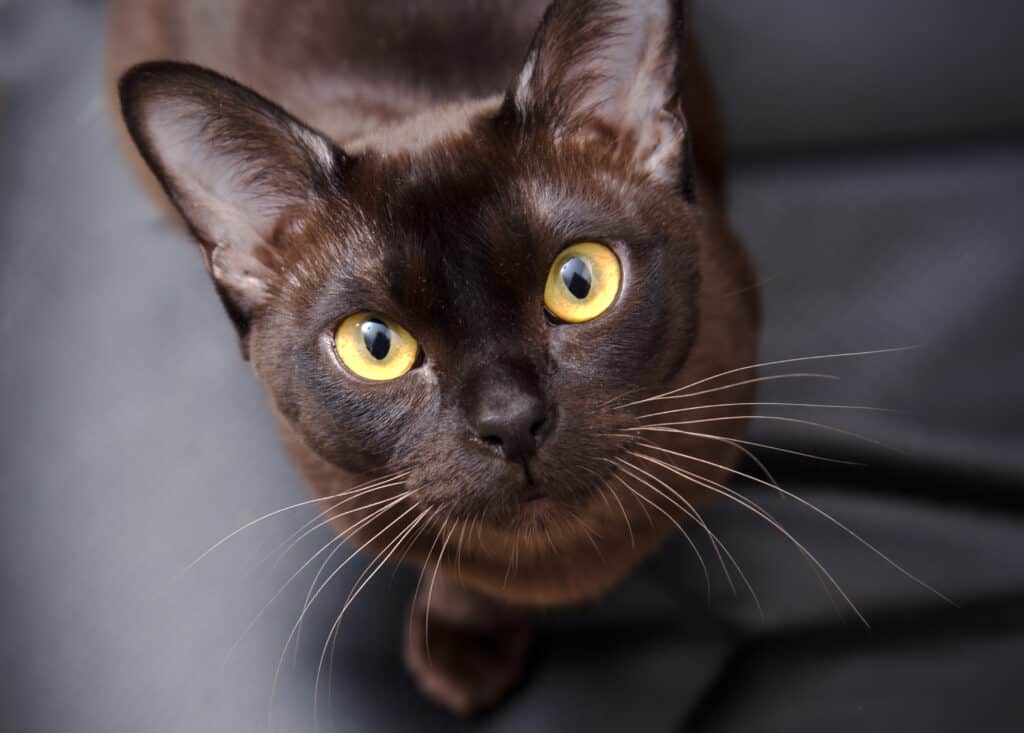
The Burmese have been nicknamed the ‘velcro cat’ due to how attached they are to their owners.
©woff/Shutterstock.com
The Bombay tends to have more energy than the Burmese, so they often require more daily exercise.
Burmese: The Burmese will lounge around with their pet parents at any given opportunity, but they will have small bursts of energy throughout the day. These feline friends need about 25 minutes of daily exercise in the form of engaged play. They love to play interactive games with their owners that involve chasing a simulated prey.
Bombay: The Bombay cat tends to have a bit more energy than the Burmese. These feline companions need at least 30 minutes of daily exercise each day, and they also require a more physically stimulating environment. They are agile and powerful climbers, so they need a home with plenty of cat trees that encourage them to stretch their limbs. You can also consider teaching them how to walk on a lead, as they love spending time outdoors.
Burmese vs. Bombay Cat: Health & Lifespan
The Burmese and Bombay cat each have unique predispositions when it comes to their health. However, most live a generally healthy life as long as they receive regular vet and wellness care.
Burmese: The average Burmese lifespan is anywhere from 10 to 17 years. They are more prone to experiencing skull deformities and subsequent pain, diabetes, strange eating habits, inflammatory bowel disease, and asthma.
Bombay: The average Bombay lifespan is anywhere from 15 to 20 years. They are more prone to experiencing skull deformities and subsequent pain, hypertrophic cardiomyopathy, chronic urinary issues, and aortic thromboembolism.
Burmese vs. Bombay Cat: Price
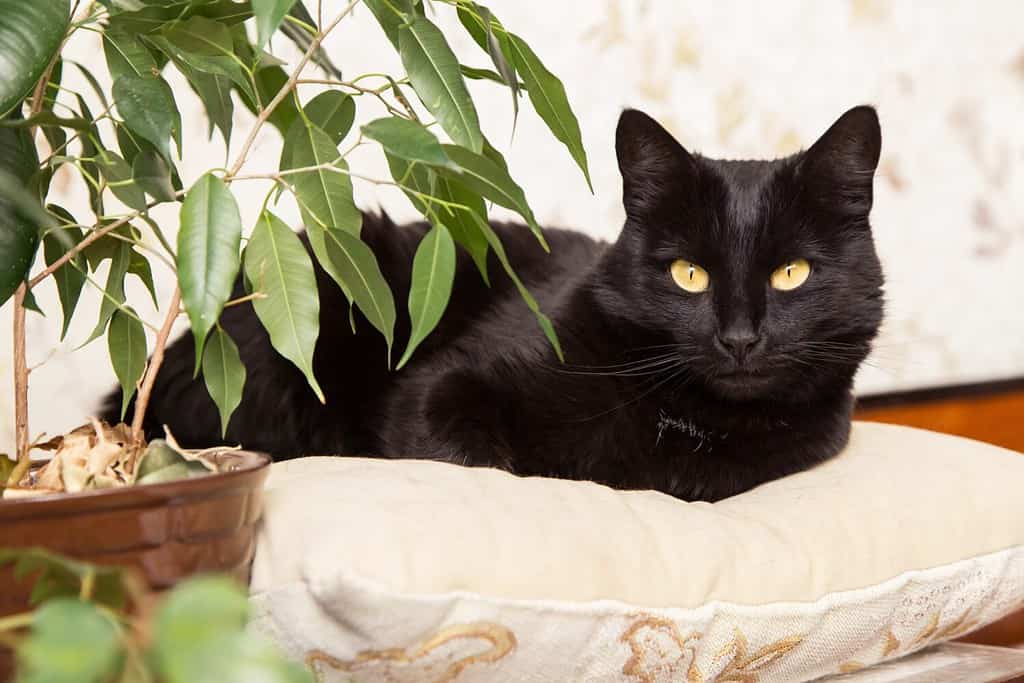
Bombay cats are energetic and playful. They thrive in a home that offers them plenty of playtime and enrichment.
©Viktor Sergeevich/Shutterstock.com
Burmese cats tend to be more expensive than Bombay cats.
Burmese: On average, a Burmese kitten can cost $700 to $1,500. However, rare Burmese coat collars are impressive bloodlines can cost up to $2,500.
Bombay: On average, a Bombay kitten can cost anywhere from $500 to $750. However, impressive bloodlines can cost up to $1,500.
We always encourage you to look for a Burmese or Bombay cat rescue near you. Not only will you be rescuing a cat and offering them a beautiful future, you will typically be saving money. Most shelters or rescues charge between $150 to $350 at adoption.
Positive Traits Of Burmese & Bombay Cats
As you can see, both the Bombay and the Burmese cat have wonderful traits that would make for an incredible companion. To help you better determine which cat breed is right for you, let’s list a few positive traits of each breed below.
Burmese
- Incredibly affectionate
- Attached to their owners
- Vocal and outgoing
- Allergy friendly
- Can be found in a variety of coat colors
Bombay
- Loving and affectionate
- Playful and energetic
- Outgoing and curious
- Incredibly vocal
So, which cat breed is right for your family – the Burmese or the Bombay cat?
The photo featured at the top of this post is © scaliger/iStock via Getty Images
Thank you for reading! Have some feedback for us? Contact the AZ Animals editorial team.




